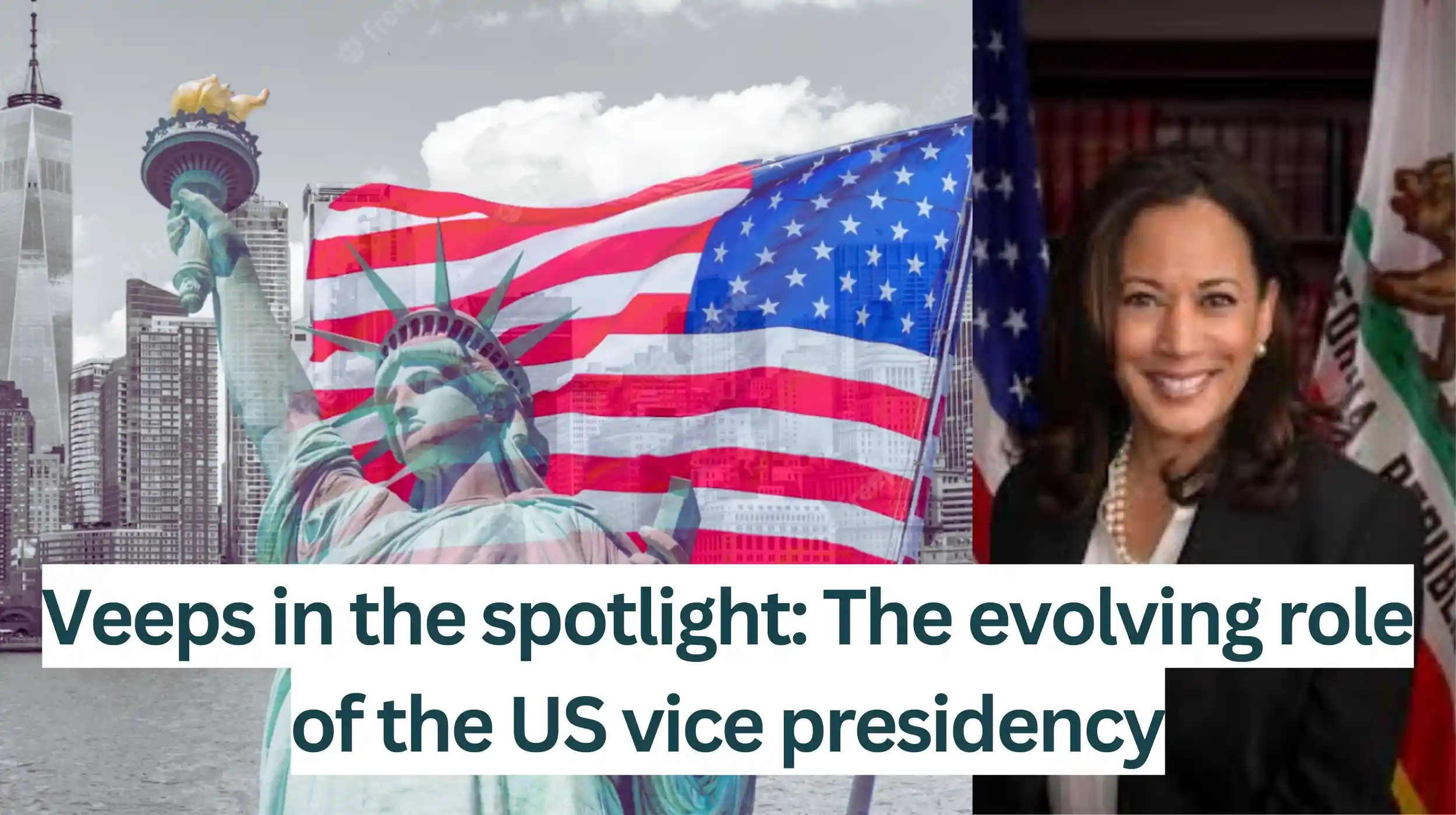Washington DC (Brussels Morning) – The role of the Vice President has undergone a significant transformation in recent decades, evolving from a largely ceremonial position to a high-profile role with significant influence in American politics. This shift is attributed to the accrual of power and resources, the emergence of the vice presidency as a launching pad for aspiring presidents, and the increasing scrutiny of vice presidents in the media and public sphere.
Once dismissed as “the most insignificant office” in the land, the Vice Presidency has emerged as a pivotal institution in American politics. As the political landscape continues to evolve, the role of the Vice President has assumed newfound significance, shaping public perception, political strategy, and the trajectory of individual careers. From navigating the challenges of social media to grappling with intensifying political polarization, the modern Vice President must manage the complexities of modern governance while under the constant scrutiny of the public eye.
The Vice Presidency: From Insignificance to Influence
In his scathing appraisal, John Adams famously dismissed the role of Vice President as “the most insignificant office that ever the invention of man contrived or his imagination conceived.” Similarly, John Nance Garner, who served as Vice President under Franklin D. Roosevelt, succinctly captured the prevailing sentiment of the time, declaring the office as “not worth a bucket of warm spit.” However, contemporary politics challenges this traditional view, and, as history has unfolded, the significance of this supposedly secondary position has become increasingly palpable, particularly in the post-Cold War era. Historically speaking, the vice presidency emerged almost as an afterthought during the Constitutional Convention of 1787.
Initially endowed with limited power, the vice president’s primary role was to preside over the Senate and break tie votes. Rarely did this position ascend to the presidency due to the demise of the incumbent. Traditionally, it has lacked allure, often serving as a compensatory measure to offset perceived deficiencies in a presidential candidate – whether in geography, gender, or experience. However, the conventional wisdom that a vice presidential pick could secure a crucial home state or demographic has waned. In the 21st century, veeps face a myriad of challenges, from navigating the minefield of social media to grappling with intensifying political polarization. The once-dismissed role of the vice president has assumed newfound significance in shaping public perception and political strategy.
The VP’s Rise to Prominence: A Shift in Political Power
the role of the vice president has undergone a seismic shift in recent decades, thrusting its occupants into the spotlight of public scrutiny. Gone are the days when veeps could cloak themselves in the protective shadow of their presidential counterparts during times of party strife. In today’s hyperconnected world, where every word and deed is scrutinized across social media platforms, the vice presidency has evolved into a high-profile position fraught with both opportunity and peril. In an era of heightened political polarization and uncertainty, the role of the Vice President has evolved beyond mere ceremonial duties. The choices made for Vice President now hold immense weight, given their potential to ascend to the presidency and influence policy decisions.
The transformation of the vice presidency can be attributed to several factors. Firstly, the office itself has accrued significant power and resources over the years, elevating figures like Biden, Dick Cheney, and Al Gore to positions of unparalleled influence in American politics. This newfound clout stems not only from the political acumen and close ties to presidents exhibited by these individuals but also from structural changes that have enhanced the vice presidency’s status. Increased staffing budgets, a West Wing office in the White House, regular one-on-one meetings with the president, and unrestricted access to presidential deliberations all are contributing to the vice president’s expanded role in governance.
Kamala Harris’ Challenge: Breaking the Favorability Ceiling
Secondly, the vice presidency has emerged as the premier launching pad for aspiring presidents, exemplified most recently by Joe Biden’s ascent to the Oval Office. With the possibility of assuming the presidency in the event of a vacancy or through succession, vice presidents now stand as the heirs apparent to the highest office in the land. In an era where the political landscape is constantly evolving, the vice presidency offers a direct path to presidential power, positioning its occupants as potential frontrunners in future elections.
Vice President Kamala Harris find herself in the unenviable position of grappling with lower favorability ratings compared to her predecessor, as indicated by recent national opinion poll by some media houses. Harris, in particular, faces scrutiny as her favorability ratings hover slightly below President Joe Biden’s, according to polls compiled by RealClearPolitics. However, such comparisons must be contextualized, considering the inherent disparity in public recognition between presidents and vice presidents. Moreover, Biden’s decision to assign Harris to tackle contentious issues like immigration early in his presidency hasn’t done her any favors, given the polarizing nature of the topic. Factually speaking, Harris has been tasked with “thankless” responsibilities since the outset of the Biden administration.
Harris Under the Microscope: VP’s Perception Tied to Policy Handling
With Biden potentially seeking a second term and remaining the oldest president in history, Republicans have intensified their focus on Harris, especially as she becomes more prominent in discussions surrounding abortion access. Her public perception will continue to be shaped by her handling of critical policy issues and her evolving role within the administration. Perceptions of vice presidents are increasingly intertwined with broader sentiments about the administration they serve—a phenomenon reminiscent of how public opinion on issues like the economy or national direction fluctuates based on which party holds power. The next vice president is poised to grapple with similar popularity challenges as their predecessors.
For Kamala Harris, this may entail heightened Republican scrutiny as Joe Biden ages. The anticipated pick for Trump’s running mate, yet to be unveiled, is expected to adhere to a more traditional role—seen but not heard—as the former president maintains his top-down leadership style. In 2016, Donald Trump’s selection of former Governor Mike Pence was widely acknowledged, even by his political adversaries, as a choice with the potential to effectively step into the presidency if the need arose. As the 2024 election looms, however, it remains uncertain whether Trump will opt for a similar running mate.
The Crucial Decision: Trump’s VP Pick and its Implications
Among the names reportedly in contention is Kari Lake, who recently rallied Trump supporters, warning of challenging times ahead and urging military and police veterans among them to remain vigilant. The choice of vice president is a crucial decision, with implications for the administration’s stability and competence. Whether Trump will prioritize experience and competency in his selection or opt for a more politically aligned candidate remains to be seen, but the decision will undoubtedly shape perceptions of his candidacy and potential return to power.
Looking ahead, the vice presidency looms large as a pivotal institution in American politics, shaping not only the trajectory of individual careers but also the course of the nation itself. As the office continues to evolve, its occupants must manage the complexities of modern governance while grappling with the ever-present specter of public scrutiny. In an age defined by rapid change and unprecedented challenges, the vice presidency remains a linchpin of American democracy, bridging the past with the future in the perpetual pursuit of progress.
Dear reader,
Opinions expressed in the op-ed section are solely those of the individual author and do not represent the official stance of our newspaper. We believe in providing a platform for a wide range of voices and perspectives, even those that may challenge or differ from our own. We remain committed to providing our readers with high-quality, fair, and balanced journalism. Thank you for your continued support.



